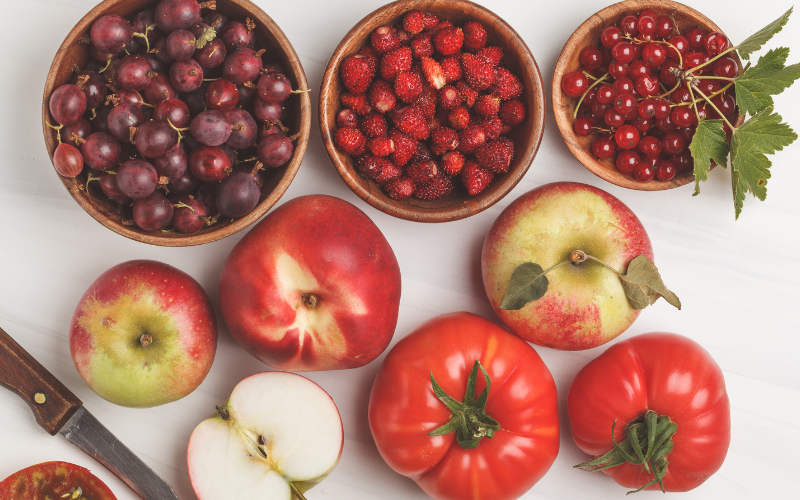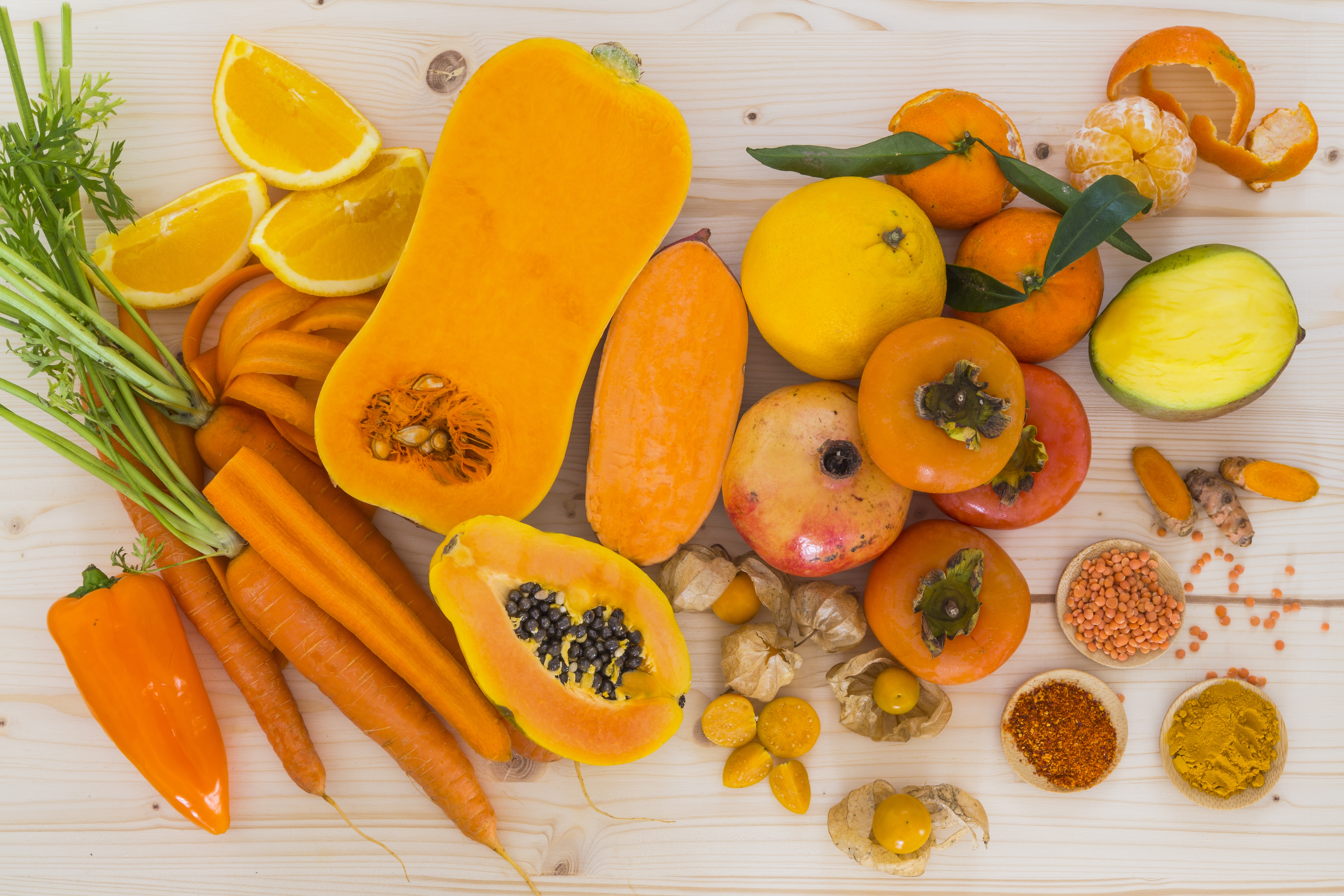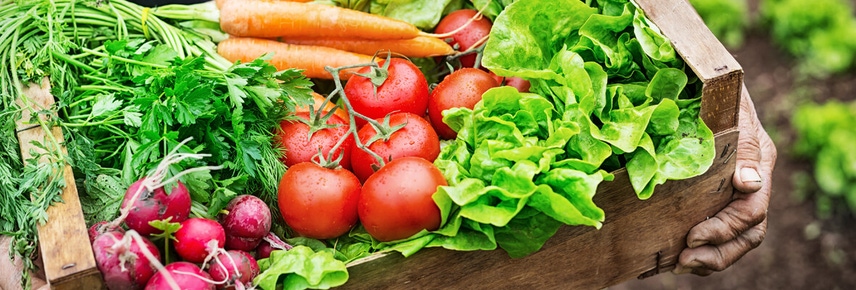Fruits and vegetables boost immunity, help reduce cholesterol and constipation and can help to protect against chronic disease.
The advice to eat two serves of fruit and five serves of vegetables each day is something many of us know, but where does it come from and do we really need to eat so many?
How much fruit and veg should I eat?
Health guidelines around the world are pretty consistent when it comes to fruit and vegetables. In Australia and New Zealand, our most recent guidelines reviewed over 90 papers and found that eating five serves of vegetables and two serves of fruit each day is the best approach for good health.
Subscribe to Wholicious Living to stay up-to-date with the latest health and nutrition advice.
Benefits of fruits and vegetables
Fruits and vegetables are packed full of the things our bodies need, like vitamins, minerals and fibre, as well as important antioxidants and phytochemicals. They can boost immunity, reduce cholesterol and constipation and help to protect against chronic diseases like type 2 diabetes, heart disease and some cancers. (For more tips on supporting your bodies natural defences visit our Immunity Hub.)
Another big benefit of eating enough fruits and vegetables each day is that they help to replace foods that you might want to eat less of – for example foods high in saturated fats, sugar and salt. The fibre in fruits and vegetables helps to fill you up, making them great for managing your weight.
Did you know?
A recent study reported that eating more fruits and vegetables increases a person’s ability to “flourish” in daily life, and enhances wellbeing and creativity in young adults.
Which fruit and vegetables should I eat?
The simple answer to this is to eat the ones you like so you can reach the goal of 2-5 a day.
One of the most important benefits of fruits and vegetables is the amount of beneficial antioxidants and phytochemicals they contain.
Antioxidants give fruits and vegetables their different colours so a handy way to make sure you're getting a good range of antioxidants and different health benefits is to choose those you like from each of the five different colour groups.
Handy guide
Red: cancer protective
Red fruits and vegetables contain phytochemicals including lycopene, ellagic acid and a flavonoid called kaempferol. These can be cancer protective and can also help reduce the risk of heart disease. A high intake of lycopene in particular has been linked with a reduced risk of prostate cancer.
Download the Eat A Rainbow activity sheet to help teach your kids about fresh fruits and vegetables and the five colour groups. Print it now.
Red fruits and vegetables include:
tomatoes
red capsicum
radishes
strawberries
watermelon
red apples
rhubarb
cherries
red grapes
raspberries.
Purple and blue: anti-bacterial
Purple and blue fruits and vegetables contain a group of phytochemicals known as flavonoids and anthocyanins, which have a mild anti-bacterial effect. Resveratrol, which is most commonly found in grapes, may have a cancer protective effect.
Purple and blue fruits and vegetables include:
beetroot
purple asparagus
red cabbage
eggplant
plums
blackberries
blueberries
purple grapes.
Orange and yellow: eye health
Orange and yellow fruits and vegetables contain phytochemicals, known as carotenoids (beta-carotene, lutein, zeaxanthin), which give this group their bright yellow and orange colours. Lutein is a carotenoid that gets stored in the eye and has shown to help protect against two of the most common causes of blindness: cataracts and age-related macular degeneration.
Orange and yellow fruits and vegetablesinclude:
carrots
pumpkin
corn
kumara (sweet potato)
rockmelon
lemons
mangoes
pineapples
oranges.
Green: cancer protective
Phytochemicals in green fruits and vegetables include varying amounts of flavonoids and carotenoids (lutein, beta-carotene and zeaxanthin). The Brassica group (broccoli, cabbage, and brussels sprouts) also contains indoles, which can help to protect against cancer. Saponins, another powerful phytochemical found in green fruits and vegetables, also have anti-cancer properties, and may stop cancer cells from multiplying. Leafy green vegetables, such as Asian greens, spinach and lettuce are an excellent source of folate.
Green fruits and vegetables include:
spinach
broccoli
asparagus
peas
avocado
green apples
green grapes
limes
kiwifruit
green pears.
White and brown: anti-viral
Not as vibrant as the other colour groups, this group contains phytochemicals like allicin, which have anti-bacterial and anti-viral properties. White and brown fruits and vegetables include:
cauliflower
garlic
ginger
mushrooms
onions
potatoes
parsnip
turnip
bananas
brown pears
dates.
Add some spice
Spices are a great way of topping up the antioxidant content of your meals and have the added benefit of reducing the need for adding salt to flavour your recipes. In fact, the antioxidant and phytochemical activity in spices is so high that even small amounts can provide a significant antioxidant and phytochemical boost to your diet.
Great spices include:
garlic
ginger
turmeric
coriander
parsley
organo
basil
thyme
sage
rosemary
saffron
chives
mint
cinnamon.
_1.png?width=826&height=350&format=png&quality=95)

_1.png)

_1.png)
_1.png)
_1.png)
.png)

